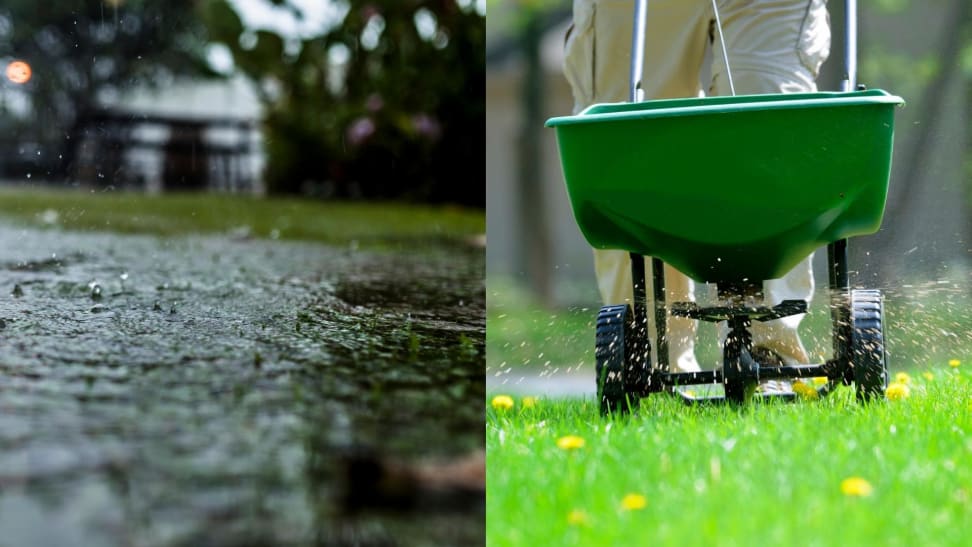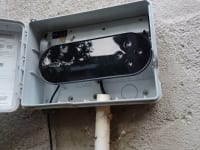This the best time to fertilize your lawn, according to pros
Experts weigh in on the best time to fertilize your lawn.
 Credit:
Reviewed / lovro77 / groveb
Credit:
Reviewed / lovro77 / groveb
Products are chosen independently by our editors. Purchases made through our links may earn us a commission.
If you’re new to lawn care and gardening, you might understand that fertilizing is a good idea for a healthy yard, but you likely are a bit confused as to the proper time to do it.
Timing is everything when it comes to maintaining a healthy landscape, and it helps to have your local weather forecast on your side. Fertilizer needs moist soil so that the nutrients it contains break down and seep into the roots of your grass and plants.
But when is the best time to fertilize your lawn, before or after rain? Here’s what experts have to say.
When is the best time to fertilize your lawn?
A heavy rainfall is good for conserving water, but it doesn’t necessarily help when it comes to fertilizing your lawn, says Michael Clarke, a landscape artist, horticulturist, and founder of Pulled, a home management solution.
“I don’t recommend fertilizing before or after a heavy rain because the fertilizer can be leached out of the soil or washed away before it can be consumed by the root zone,” Clarke says.
Instead, the best time to fertilize the lawn is right before a light to moderate rainfall. This ensures that the roots have plenty of time to absorb all those nutrients as the fertilizer breaks down.
Nastya Vasylchyshyna, a resident botanist expert for the NatureID app, agrees. Whether you’re using granular or liquid fertilizer, applying just before it rains or a few hours after watering will prevent the fertilizer from burning your grass.
“If the rain is light and doesn’t thoroughly soak the soil or if there’s a drought, it’s best to water it manually so that the fertilizer dissolves evenly,” says Vasylchyshyna.
You might be thinking that instead of subscribing to weather alerts on your phone that it’s best to just haul out the garden hose or hook up a smart sprinkler controller instead.
Yes, watering your lawn is important in general and can do the trick if your region is experiencing a stretch of dry weather, but rain is still the better option, says Clarke.
“Rain contains higher amounts of oxygen from the atmosphere than sprinkler water alone, which is much better at allowing the root zone to uptake nutrients,” Clarke explains. He also recommends organic fertilizers, as they work to build up the soil profile and long-term nutrients.
It bears noting that while a heavy rainfall washing away fertilizer is a waste of both your time and money, there’s much more at stake: Fertilizer runoff poses a huge risk of pollution to the local water supply.
This is an issue not just for freshwater bodies that are full of fish and other marine life, but also urban areas where the water supply can be contaminated by the fertilizer runoff.
That’s why the amount of rainfall is a key consideration when fertilizing.
Other considerations when fertilizing
In addition to timing your application of fertilizer, it’s important that you are choosing the right one for your lawn and garden’s needs and applying it correctly.
If you’re using a granular fertilizer, apply it directly to the soil and avoid getting it in the blades of grass. To prevent burns and bare patches from popping up, distribute the fertilizer as evenly as possible across the lawn, says Vasylchyshyna.
Another thing to be aware of with fertilizing is the recommended dosage. Just as you wouldn’t want to take more than your daily dose of vitamins, more of a good thing is not a good thing for your grass.
“You can also avoid chemical burn of the roots by diluting the recommended dosage for the first feeding and monitoring the lawn’s condition,” says Vasylchyshyna.
To grow a beautiful disease-resistant lawn with strong roots, Vasylchyshyna says to fertilize it with complex plant food starting in the spring and going through the fall.
In the springtime, Vasylchyshyna recommends nitrogen-rich fertilizers for lush growth and vibrant color. In the summer, she says to use any one of the complex mineral fertilizers on the market—read the label and choose one that has vital microelements such as boron, iron, and molybdenum. In the fall, time your fertilization before the first frost and choose fertilizers that are rich in phosphorus and potassium.
You and your lawn can take a break in the winter time, as grass doesn’t need to be fertilized in the cold season.
Now that you’re feeling like a proud homeowner for taking such good care of your lawn and garden, don’t reverse the work you’ve just done, says Vasylchyshyna. To avoid stress or damage to your lawn, hold off on mowing two to three days after fertilizing.


